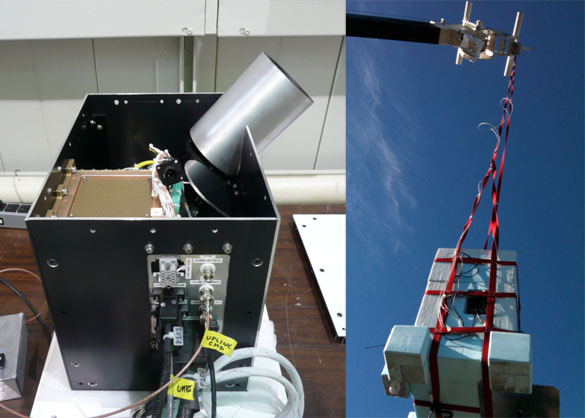Flight Demonstration of an Integrated Camera and Solid-State Fine Steering System
PI: Eliot Young, Southwest Research Institute - Boulder
PI: Eliot Young, Southwest Research Institute - Boulder

- TA08 Science Instruments, Observations and Sensor Systems
The main obstacle to achieving diffraction-limited performance from a balloon is motion compensation - it's equivalent to having an SUV hanging from a string and keeping it steady at the level of a few arcseconds. The problem consists of two parts: measuring the pointing error (with a star tracker and/or accelerometers, for example) and correcting the pointing error. We have recently flown a star tracker called "DAYSTAR," designed to acquire stars during daytime at 120,000 ft. We now seek to fly a camera based on an orthogonal transfer CCD (OTCCD), a detector from MIT Lincoln Laboratory that can shift charge in left-right-up-down directions. A few ground-based focal planes use OTCCDs to perform tip-tilt compensation of image motion due to atmospheric turbulence. These OTCCD-based systems typically reduce the image widths by about 15%. Our goal is to demonstrate the image quality that OTCCDs can provide using tip-tilt corrections with no moving parts.
OTCCD-based cameras are currently at TRL 4. Our payload, a small telescope with an existing MIT/LL OTCCD camera, will be constructed under a Southwest Research Institute Internal Research program. After thermal-vac testing and ground tests with a simulated star scene generator, the OTCCD camera will have a TRL 6 rating (System/subsystem model or prototyping demonstration in a relevant end-to-end environment). After flight it will also have achieved TRL 9 (Actual system flight proven).
Combined with the means to point at the 0.1" level in day or night and the means to perform image stabilization at the 0.05" level, a robust, no-moving-parts camera will enable balloon-borne telescopes to compete with HST, but at a vastly lower cost.
This project has two eventual goals: demonstration of 0.1" imaging (or better) from balloon- borne telescopes, and demonstration of an OTCCD-based camera that performs image stabiliza- tion at the 0.1" level. The risk associated with the both goals will be retired following a successful flight of a small telescope equipped with an OTCCD-based camera. To date, we know of no OTCCD that has flown on an airborne or spacecraft platform.
Technology Details
-
Selection DateAFO3 (Mar 2012)
-
Program StatusWithdrawn
- 0 Balloon
Development Team
-
PIEliot Young
-
Organization
-
SponsorSouthwest Research Institute

